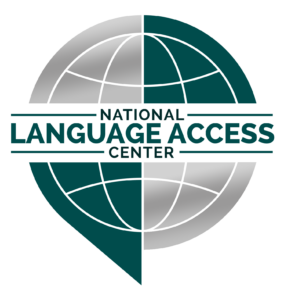The Future of Language Access: Trends and Predictions for the Next Decade
The field of language access is dynamic and ever-evolving, driven by technological advancements, shifting demographics, and a growing recognition of the importance of linguistic diversity. As we look ahead to the next decade, several key trends and predictions suggest a future where communication barriers are minimized, and inclusivity becomes the norm.
- AI-Powered Language Services
Artificial intelligence (AI) is poised to play an even greater role in language access, with advancements in machine translation, natural language processing, and automated speech recognition. While human interpreters and translators will remain essential, AI-powered tools will increasingly assist in:
Real-time translation: Imagine a world where conversations flow seamlessly between languages with the help of AI-powered interpreting devices. This technology is already emerging, and its accuracy and capabilities are expected to improve significantly in the coming years. Having witnessed the limitations of early machine translation, I’m particularly excited to see how AI can enhance accuracy and bridge linguistic gaps in real-time.
Personalized language learning: AI-driven language learning platforms will offer personalized and adaptive learning experiences, making it easier for individuals to acquire new languages and bridge communication gaps.
Automated quality assurance: AI can be used to analyze and assess the quality of translations, ensuring greater accuracy and consistency.
- Remote Interpreting: The New Normal
The COVID-19 pandemic accelerated the adoption of remote interpreting, and this trend is likely to continue. Video remote interpreting (VRI) and over-the-phone interpreting (OPI) offer numerous benefits:
Increased accessibility: Remote interpreting allows organizations to access qualified interpreters for a wider range of languages, even in remote or underserved areas.
Cost-effectiveness: Eliminating travel expenses and allowing interpreters to serve multiple clients in a shorter timeframe makes remote interpreting a cost-effective solution.
Flexibility and convenience: Remote interpreting can be easily integrated into various settings, from healthcare appointments to business meetings and conferences. This shift towards remote options reflects a broader trend in how we work and communicate, and I believe it will open doors to greater accessibility and flexibility in language services.
- Emphasis on Cultural Competency
As the world becomes increasingly interconnected, cultural competency will be even more critical in language access. This means going beyond linguistic proficiency to understand and respect the cultural nuances, values, and communication styles of diverse communities.
Culturally aware training: Language professionals will receive training in cultural awareness and sensitivity to ensure they can effectively bridge cultural gaps. In my own experience, cultural sensitivity has been just as important as language proficiency in ensuring effective communication and building trust with clients.
Community engagement: Organizations will actively engage with diverse communities to understand their language and cultural needs, ensuring that language access services are tailored and appropriate.
- Increased Demand for Language Skills
With globalization and increasing migration, the demand for language skills will continue to grow across various sectors, including healthcare, education, business, and government.
Bilingual workforce: Organizations will increasingly seek bilingual employees or invest in language training for their staff to better serve diverse populations.
Specialized language services: The need for interpreters and translators with expertise in specific fields, such as healthcare, law, or technology, will continue to rise. This highlights the importance of ongoing professional development for language professionals, to stay abreast of evolving terminology and industry-specific knowledge.
- Focus on Language Access Planning
Organizations will proactively develop and implement comprehensive language access plans to ensure they are meeting the needs of LEP individuals and complying with legal requirements.
Data-driven decision making: Language access planning will be informed by data analysis, community input, and ongoing monitoring and evaluation.
Collaboration and partnerships: Organizations will collaborate with community partners, language service providers, and technology experts to create effective and sustainable language access solutions.
The future of language access is bright, with opportunities to break down communication barriers and create a more inclusive and equitable society. By embracing technology, fostering cultural competency, and prioritizing language access planning, organizations can ensure that language is no longer a barrier to accessing information, services, and opportunities.
If you’re ready to navigate the future of language access and ensure your organization is prepared, I’m here to help. With my extensive experience as a Spanish interpreter and language access professional, I can guide you through the process of developing and implementing effective language access solutions. Contact me today to discuss your needs and let’s work together to build a more linguistically inclusive future.






